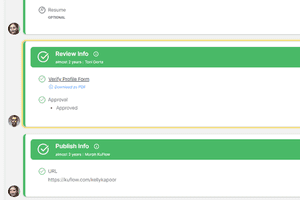How and what leading companies automate
Published 15-02-2022 by KuFlow

Credits: Mohammad Rahmani
In an increasingly competitive world, it is necessary to reduce as much as possible those tasks that do not add value to customers.
These are tasks that have arisen over the years to meet internal requirements, to solve internal complexities or for compliance reasons.
However, these actions do not provide value to the customer because they involve delays, waiting, more steps than necessary or even a higher price.
Hyper-automation is a means to achieve true digital transformation. Through a range of tools, such as robotic process automation (RPA), machine learning (ML) and artificial intelligence (AI), it is possible to automate complex business processes (including going so far as to replace the knowledge of subject matter experts).
Where does hyper-automation make sense?
It is possible to apply hyper-automation in a multitude of sectors and industries, and in a wide variety of departments.
The following is a brief, non-exhaustive list of possible applications of automation in companies:
- Human Resources Department
- Recruitment and selection
- Employee onboarding
- Vacation request
- Equipment request
- IT resources activation
- Assignment of leaves of absence
- Payroll generation and dispatch
- Employee data entry
- Administration Department
- Generation of purchase orders
- Authorization and generation of payments to suppliers
- Treasury operations
- Tax operations
- New customer and credit application
- Compliance monitoring and reporting
- Automatic invoicing
- Bank reconciliation
- Customer Service Department
- Gathering of information from different systems in a single environment
- Automation of backoffice tasks
- Sales order generation
- Customer requests and customer journeys
- Integration with chatbots
- Contract generation and dispatch
- Renewal of periodic agreements
- Complaint and incident management
- Sales Department
- Data replication in different systems
- Generation of personalized offers
- CRM data update
- Prospect research
- IT Department
- Automation of compliance, procurement and data management jobs
- Maintenance of security tools
- New user generation
- Certificate and anti-malware software checks
- Termination and deactivation of users
- Operations Department
- Data replication between systems
- Report and data preparation automation
- Order updates
- Price review and monitoring
- Transportation and supply chain planning and calculation
- Stock management and monitoring
The question is not whether or not to automate processes in our company, but where to start.





